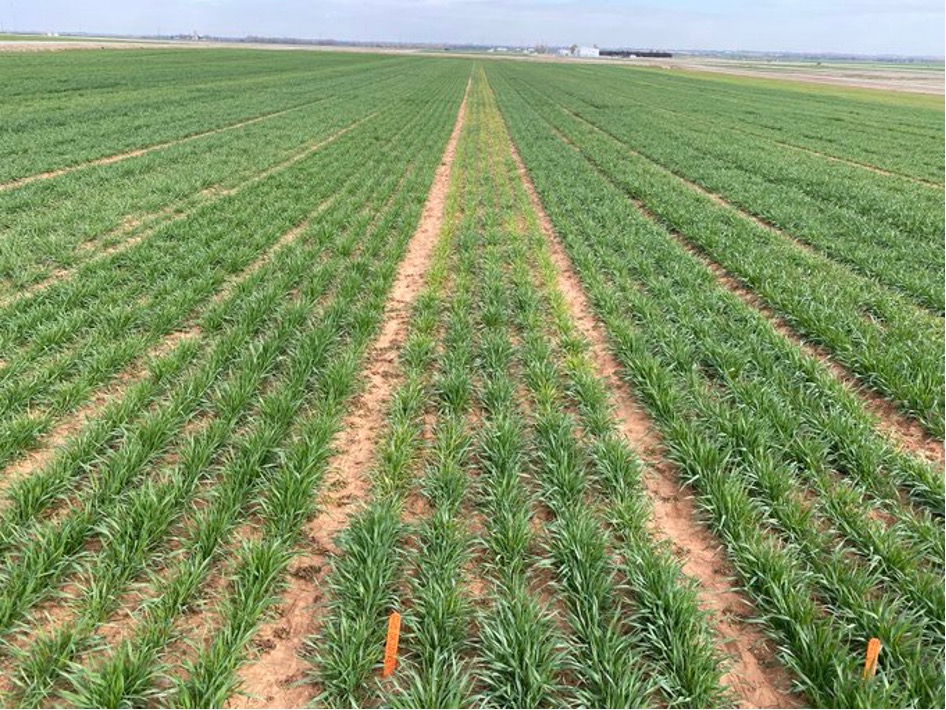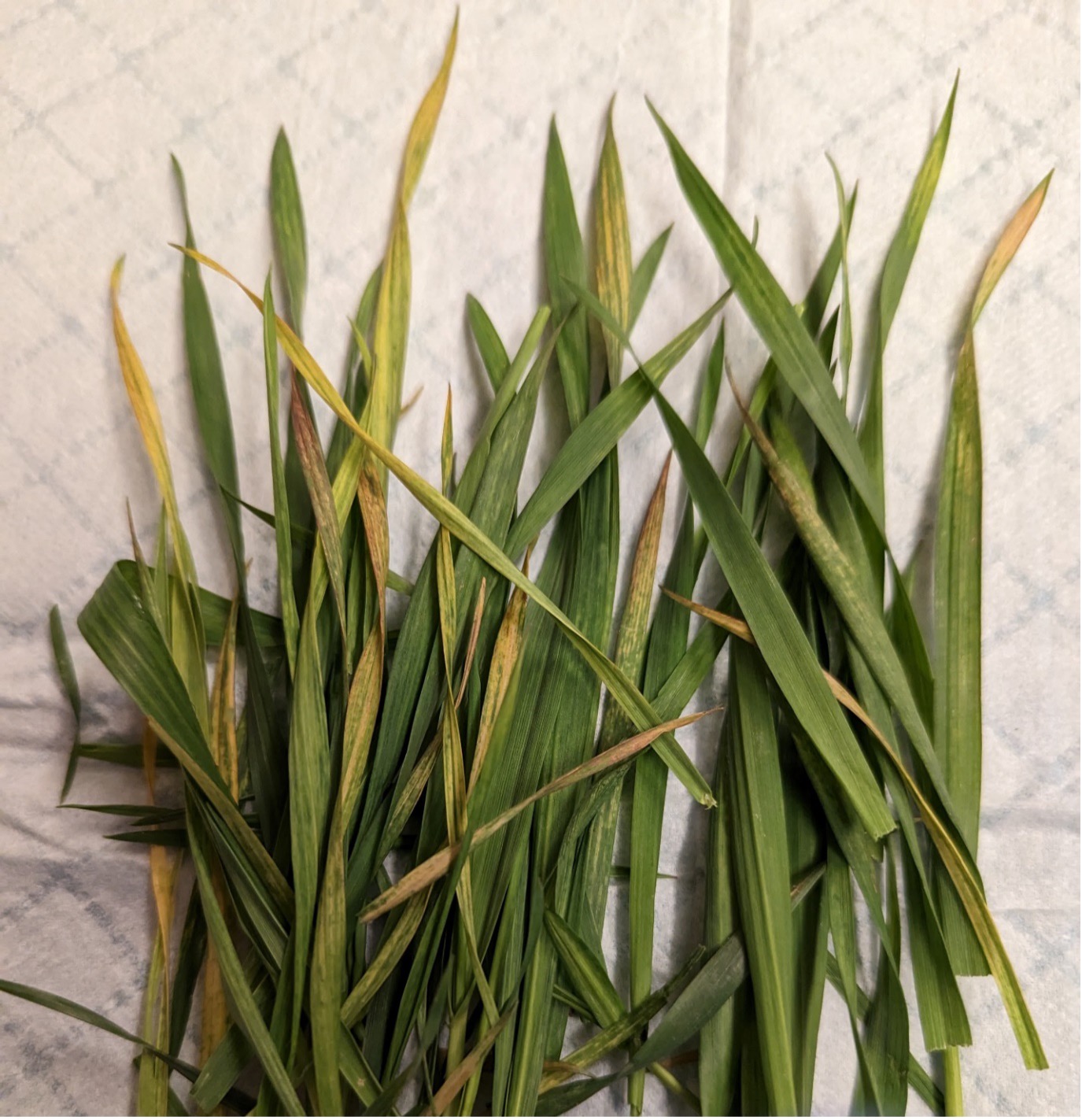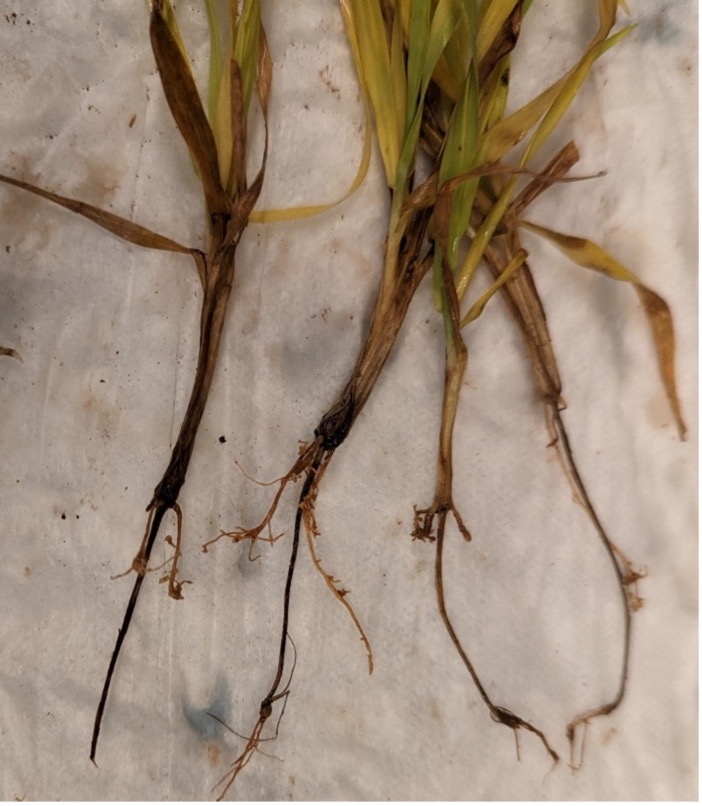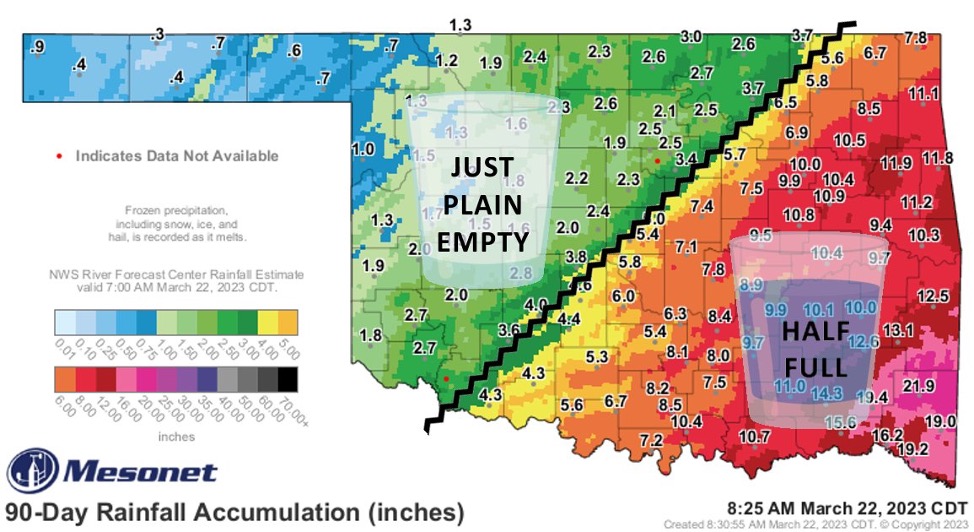Wheat Disease Update March 2023
In mid-March, wheat infected with soilborne wheat mosaic virus (SBWMV)/wheat spindle streak mosaic (WSSMV) were observed in Oklahoma State University (OSU) research trials in Lahoma (Figure 1) and near Stillwater. The much later planting last fall in cooler soils could contribute to the appearance of this disease. However, many wheat varieties grown in Oklahoma and the central plains are resistant to SBWMV/WSSMV.
Figure 1. Yellowing of plants in the middle plot was caused by soilborne wheat mosaic/wheat spindle streak mosaic virus complex. Photo was taken in OSU wheat research trial in Lahoma, Garfield County, OK (Photo: Dr. Brett Carver, 14 March 2023).
In variety demonstration plots in Stillwater (Payne County, OK), Dr. Amanda De Oliveira Silva (Small Grains Extension Specialist, OSU) found wheat infected with wheat streak mosaic virus (WSMV), SBWMV, and WSSMV (Figure 2). The presence of these viruses was confirmed using Enzyme linked immunosorbent assay (ELISA) at the OSU Plant Disease and Insect Diagnostic Laboratory. Wheat streak mosaic was severe last year and was reported in multiple fields across Oklahoma.
Figure 2. Wheat infected with wheat streak mosaic virus and soilborne wheat mosaic virus. The wheat sample was collected from variety demonstration plots in Stillwater, OK.
On 13 March 2023, Gary Strickland (Jackson County Extension Director) sent wheat samples from fields in Altus (Jackson County) that were infected with common root rot (caused by Bipolaris sorokiniana) and Fusarium crown and root roots. These samples consisted of wheat plants with yellowing leaves and discolored roots (Figure 3). Similar symptoms were also found in another wheat field in Kingfisher County. These root rot diseases were favored by drought conditions that continue to be an issue in Western Oklahoma (Figure 4).
Figure 3. Common root rot symptoms (caused by Bipolaris sorokiniana) in a sample collected from a wheat field in Altus (Jackson County, 13 March 2023).
Figure 4. Rainfall accumulation map displays accumulated rainfall observed at each Mesonet site in Oklahoma in the last 90 days (Mesonet, 22 March 2023).
On 15 March 2023, Dr. Amir Ibrahim (Regents Professor & Small Grains Breeder/Geneticist, Texas A&M University) reported leaf rust and stripe rust in a naturally infected rust nursery in Castroville, TX. There were nonuniform hot spots of stripe rust (Figure 5) and a uniform infection with leaf rust pathogen races virulent to the leaf rust resistance genes Lr24 and Lr39.
Figure 5. Stripe rust on a susceptible winter wheat variety in Castroville (Photo: Dr. Amir Ibrahim, 6 March 2023).






